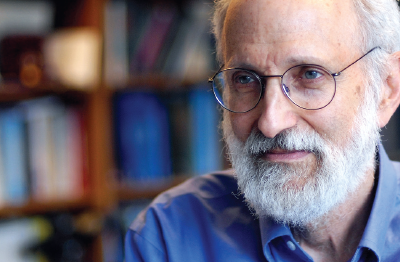Risk of Alcohol Use Disorder Rises When Spouse is Diagnosed
Abstract
A new study suggests that married men and women are up to 14 times more likely to develop alcohol use disorder immediately after their spouses are diagnosed with the disorder.
Married couples are often said to resemble one another in appearance, and new research shows the similarity doesn’t end there. A study in the March JAMA Psychiatry has found that when one spouse develops alcohol use disorder, the other spouse tends to do so as well.

Kenneth Kendler, M.D., a professor of psychiatry and director of the Virginia Institute of Psychiatric and Behavioral Genetics at Virginia Commonwealth University, says that clinicians need to consider the drinking habits of spouses that may be working against treatment goals.
Evidence suggests that spouses’ social interaction may be part of the reason why. The longitudinal study of married couples in Sweden found that women were 14 times more likely to be diagnosed with alcohol use disorder (AUD) immediately after their spouses were diagnosed, compared with couples with no AUD exposure. Similarly, husbands were nine times more likely to be diagnosed with AUD immediately after their wives.
However, a few years after a married person’s initial AUD diagnosis, the risk of his or her spouse being diagnosed dropped to about four times that of a person with no spousal exposure to AUD, according to Kenneth Kendler, M.D., a professor of psychiatry and director of the Virginia Institute of Psychiatric and Behavioral Genetics at Virginia Commonwealth University, and colleagues.
“This study shows that the effect of social interaction on the development of alcohol use disorders is larger than we might have assumed in the past,” said Elie Aoun, M.D., a forensic and addiction psychiatrist at Columbia University and a member of APA’s Council on Addiction Psychiatry, who reviewed the study for Psychiatric News. For instance, some drink to be social with a spouse who drinks excessively; others drink to alleviate the stressors of being married to someone with AUD. Either could lead to an alcohol use disorder. “That’s a chronic disorder that can stay with them for life.”
Results Hold With Multiple Marriages
For the study, researchers examined population data and medical, pharmacy, and crime registries in Sweden to determine marital and AUD status. First, they identified about 8,500 couples in which neither had a history of AUD prior to marriage and one spouse developed the disorder during the marriage. These couples were compared with a control group who were matched on family history of AUD and year of marriage but were not exposed to an affected spouse.

Elie Aoun, M.D., a forensic and addiction disorder psychiatrist at Columbia University, says that the role of social interaction between spouses with regard to alcohol disorders may be larger than previously thought.
Next, the researchers studied nearly 5,000 individuals with multiple marriages whose first spouse had no AUD diagnosis and the second spouse did, or vice versa. When individuals who were married to someone with AUD transitioned to a second marriage to a spouse who did not have the disorder, they cut their risk of AUD by half. By contrast, individuals who moved from a marriage to a spouse without the disorder to one with AUD increased their risk sevenfold to ninefold.
The researchers also noted that when individuals divorced and remarried, they were more likely to move from having a spouse free of a AUD to a spouse with the disorder than vice versa. While the reasons for this aren’t clear, people who divorce and remarry generally are more likely to have an alcohol use disorder, Kendler said.
“I was surprised at the consistency of the data,” Kendler told Psychiatric News, which he found to be convincing evidence of the causal relationship between a spouse’s alcohol disorder and that of his or her partner. “We found that a person’s risk dropped precipitously just by divorcing a partner with alcohol disorder and remarrying someone without it.” This pattern held true for first, second, and third marriages.
“Furthermore, the initial, very big uptick in risk for alcohol disorder seen in the data after a spouse’s diagnosis suggests that the way spouses are interacting with each other is the cause,” Kendler told Psychiatric News. “It’s almost like an infectious condition—the alcohol disorder translates to the other person. If the increased risk was caused merely by a couple’s general resemblance to one another, it would hold constant over time.”
Clinical Implications
So why is this study important to psychiatrists? “In a clinical situation, you need to consider the drinking habits of spouses that may be working against your treatment goals,” Kendler said.
The study also demonstrates the need for an important change in the way clinicians think about and consider risk factors for AUD, Aoun said. “We are trained to ask about family history, and that usually means blood relatives, siblings, and parents, with the idea that these disorders are inherited and genetically based. This study shows that it is just as important to ask about the drinking habits of spouses, neighbors, and friends. The behaviors of people around you could affect your own risk of substance use disorders, even if they are not related to you, regardless of your own genetic makeup.”
This report follows a September 2016 study by Kendler finding that marrying a spouse with no history of AUD afforded a protective effect against the disorder. Men and women whose spouse had no history of AUD were 60 percent to 70 percent less likely to develop AUD than those who remained single. Like the current study, it found marriage to a spouse with AUD greatly increased the risk of developing the disorder. ■



